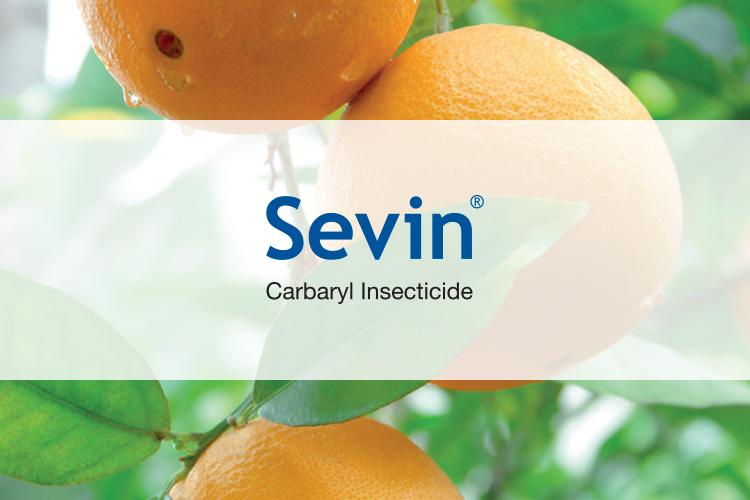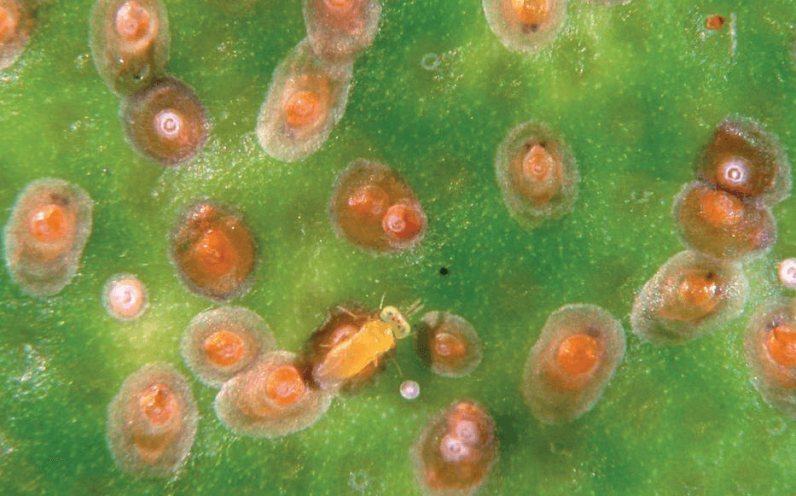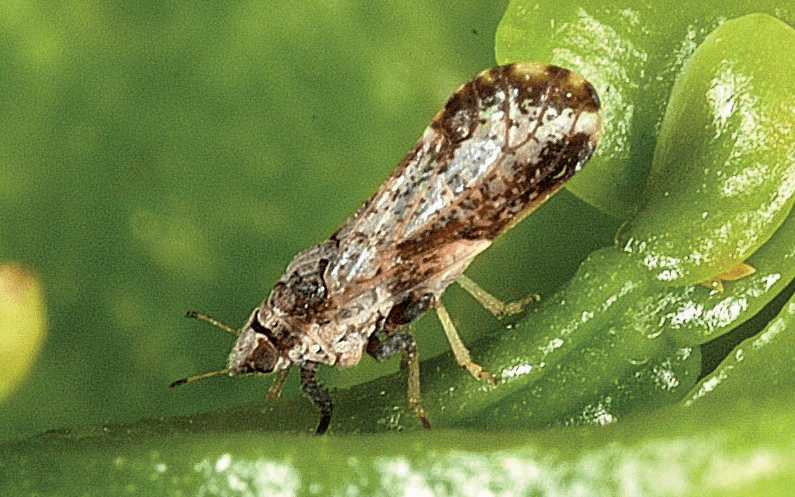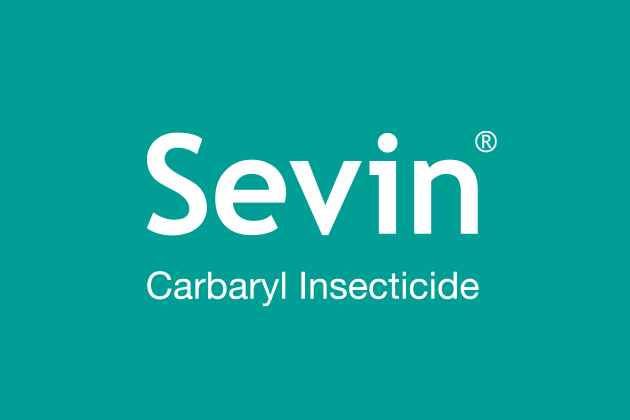Control California Red Scale and ACP

For Control of California Red Scale and ACP
For many years Sevin® Carbaryl Insecticide has aided California growers in the control of important citrus pests such as Red Scale, Citrus Cutworm, Orange Tortix, and Fuller Rose Beetle (see complete list of pests controlled on reverse side).
The introduction of Asian Citrus Psyllid (ACP) (Diaphorina citri) to California citrus has the potential to dramatically change current IPM practices. The tolerance for ACP prevention will be of ultimate concern. In Florida, SEVIN has shown to be an effective tool in controlling ACP.
SEVIN is a GROUP 1A insecticide (Acetylcholinesterase Inhibitors) and provides a different mode of action versus other insecticides used in citrus.
The SEVIN XLR Plus formulation (Extra Long Residual) provides longer residual control and is easier to handle, mix, and apply versus the older discontinued WP formulation.

California Red Scale
Use SEVIN XLR Plus to control red scale when populations reach economic threshold levels. Proper application timing and rotation with alternative insecticides will help decrease the potential of resistance from occurring.
Tips for successful Red Scale control:
- Monitor pest and apply at crawler stage
- Always buffer the SEVIN XLR spray solution to a pH below 7.0
- Coverage is essential. Use sufficient water volumes to achieve thorough wetting.
- Rate: 5-12 quarts per acre

Asian Citrus Psyllid
A FIFRA 2ee recommendation exists for SEVIN XLR PLUS for Asian Citrus Psyllid control in California citrus. Read and Follow 2ee directions.
- RATE: 1.5 – 3 quarts per acre
- TIMING: Repeat as necessary up to 8 applications but not more often than once every 14 days.
- Restrictions & Precautions: See 2ee @ http://www.cdms.net/LDat/ldAK3026.pdf
Citrus Fruits:
| Pest | Quarts / Acre | Specific Directions |
|
2 to 3 |
Observe bee caution. Repeat applications as necessary up to a total of 8 times per year but not more often than once every 14 days. For scale, apply when crawlers are present. For best results with Eriophyid mites including citrus rust mite, apply when pest populations are low. |
|
3 to 5 | |
|
5 | |
|
California only:
|
5 to 12 | Do not make more than 1 application per crop per year for California red scale. Apply when crawlers are present. |
Restrictions: Citrus Fruits
- Do not apply within 5 days of harvest.
- Do not apply more than 20 quarts per acre per crop year.
- Restricted Entry Interval (REI) = 12 hours.
- CA Restricted Entry Interval (REI) = 3 days for application rates > 5 quarts per acre
- Maximum Use Rate per Application: CA = 12 quarts, consult label for all other states
- BEE CAUTION: Do not apply this product to target crop in bloom. Mowing weed cover or cover crop prior to applying this product will reduce hazard to bees.
Applicators using airblast equipment for application to citrus in California must use an enclosed cab that meets the definition in the Workers Protection Standard for Agricultural Pesticides [40 CFR 170.240(d)(5)] for dermal protection. In addition, such applicators must:
- Wear long-sleeved shirt, long pants, shoes and socks.
- Either wear a NIOSH-approved dust/mist filtering respirator with NIOSH/MSHA approval number prefix TC-21C or a NIOSHapproved respirator with any N, P, R, or HE filter or use an enclosed cab that is declared in writing by the manufacturer or by a government agency to provide at least as much respiratory protection as this type of respirator.
- Be provided, have immediately available for use, and wear in an emergency when they must exit the cab in the treated area coveralls, chemical-resistant gloves, chemical-resistant footwear, and chemical-resistant headgear (if overhead exposure) plus — if not already using one — the respirator specified above — take off any PPE that was worn in the treated area before re-entering the cab, and
- Store all such PPE in a chemical-resistant container, such as a plastic bag, to prevent contamination inside of the cab.


